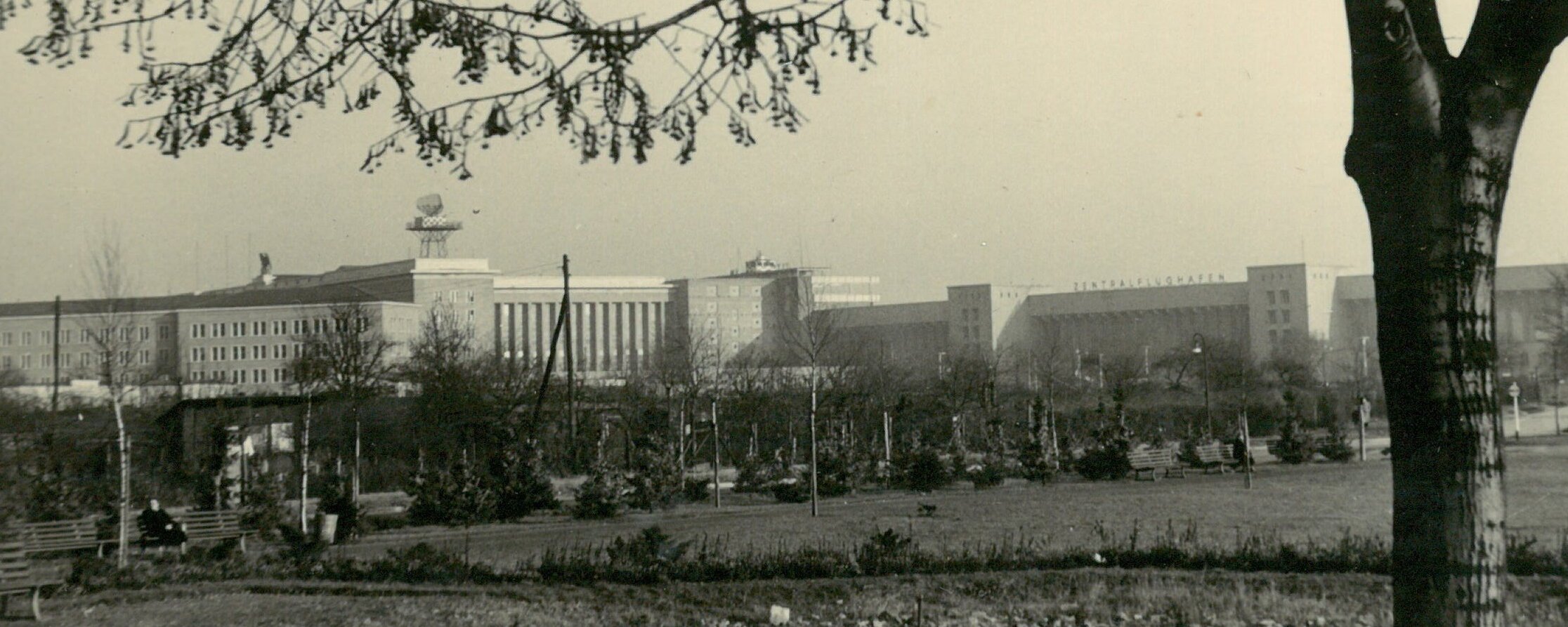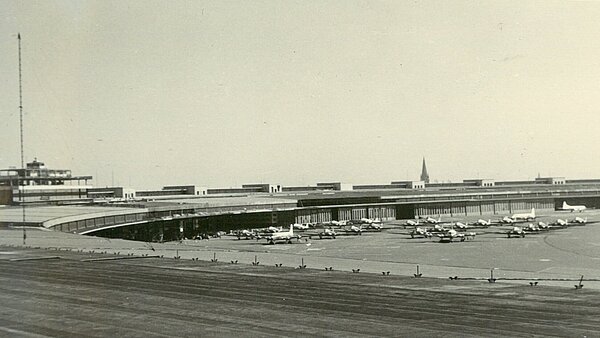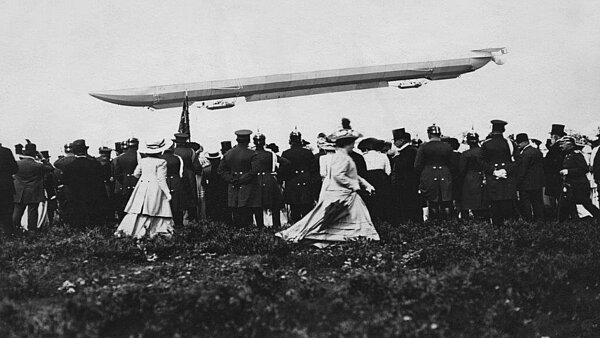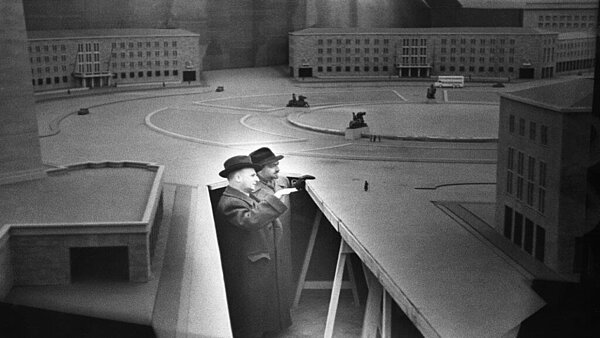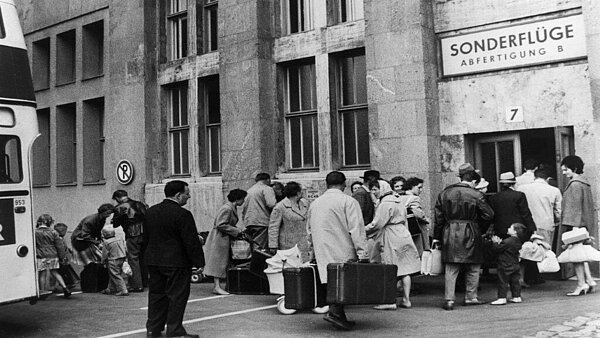History
Searching for historical traces at THF
Tempelhof Airport was built between 1936 and 1941 according to plans by Ernst Sagebiel and is considered the largest architectural monument in Europe. It stands for the monumental architecture of the National Socialists, but became a symbol of freedom during the Berlin Airlift of 1948/49.
Tempelhof Airport is unique in Europe. No other airport of this size was built in the 1930s. The integration of hangars, check-in, and administration in one building is unique worldwide. Construction work remained unfinished due to World War II. During the war, parts of the building were used for arms production.
From 1945, the US Air Force used the airport, and later it was also used for civilian purposes. Civilian air traffic officially began on July 9, 1951. The current main hall was built in 1962.


